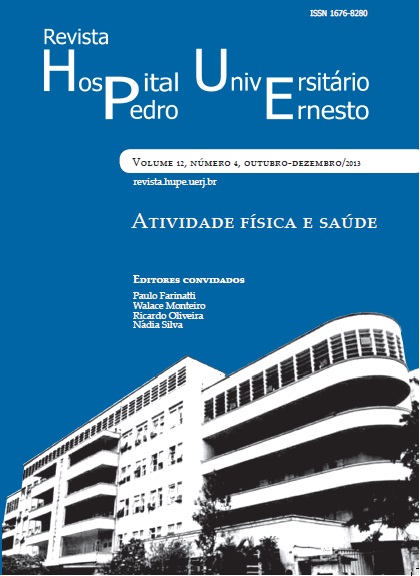Rabdomiólise induzida pelo exercício: biomarcadores, mecanismos fisiopatológicos e possibilidades terapêuticas
DOI:
https://doi.org/10.12957/rhupe.2013.8713Resumo
O termo “rabdomiólise” significa literalmente quebra ou ruptura do tecido muscular esquelético, que é derivado de uma de suas principais características: a deterioração deste tecido. A rabdomiólise possui uma etiologia bastante variada sendo conhecida há muito tempo. A interação com vários fármacos é bem-descrita pela literatura. Episódios curtos de exercício agudo ou severo também podem aumentar em muito a probabilidade de seu aparecimento. Além disso, estudos recentes mostram que sob certas circunstâncias esta interação também pode ser observada com a utilização de alguns tipos de suplementos alimentares, um comportamento comum reportado por praticantes de atividade física em geral. Esta síndrome normalmente está associada com uma lesão celular maciça, que pode levar à dor e eventual e potencialmente a óbito. Os mecanismos fisiopatológicos que originam a rabdomiólise são relativamente bem-descritos, porém diversos estudos recentes sugerem que alterações significativas no equilíbrio antioxidante do organismo estão associadas com esta síndrome. Contudo, a utilização de antioxidantes como estratégia terapêutica ainda apresenta resultados controversos. Por outro lado, trabalhos recentes mostram que o treinamento adequado exerce um efeito protetor contra o aparecimento de danos celulares induzidos pelo exercício, promovidos pela manutenção do estado antioxidante. O conhecimento insatisfatório apresentado por professores de educação física sobre esta síndrome merece atenção, pois estes profissionais trabalham atendendo diariamente a centenas de pessoas. Este quadro se torna ainda mais problemático quando uma parte significativa da população começa a participar de regimes de atividade física em condições não controladas. Sendo assim, é de fundamental importância o reconhecimento desta síndrome na prática desportiva de modo que possa ser realizada uma intervenção precoce. Futuros estudos são necessários para o diagnóstico da rabdomiólise, facilitando o monitoramento e prevenção de riscos no exercício físico. Em nosso laboratório estamos avaliando parâmetros bioquímicos que poderiam estar associados com possíveis mecanismos nessa síndrome.
Descritores: Rabdomiólise; Dano celular;Redox; Exercício físico.
Revista HUPE, Rio de Janeiro, 2013;12(4):59-65
doi:10.12957/rhupe.2013.8713


